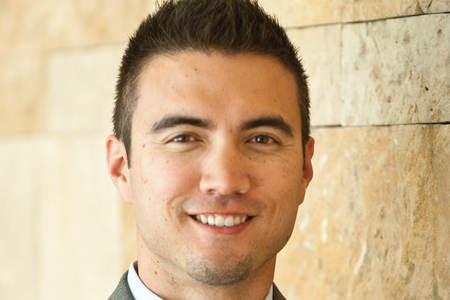Companies To Watch: Symic Biomedical
By Wayne Koberstein, Executive Editor, Life Science Leader
Follow Me On Twitter @WayneKoberstein
Needed treatments in vascular injury, osteoarthritis, and maybe more, cleverly targeting the dynamic extracellular matrix.
SNAPSHOT

WHAT’S AT STAKE
Almost all drugs target some process or mechanism that occurs inside cells, the building blocks of life. But there is more to tissue than those living bricks — the mortar that holds them together; namely, the ECM. But the ECM is more than mortar. It is dynamic as well as structural, directing cell division and distribution and determining the function and even appearance of tissues. “Cells have an interactive relationship with the extracellular matrix,” says Symic CEO Ken Horne.
The ECM consists of water, minerals, fibrous proteins, and “proteoglycans” — each one consisting of long, carbohydrate-related molecular chains or “glycosaminoglycans” attached to a protein core. When a tissue sustains a wound, even in the most sterile conditions, the ECM triggers a set of appropriate responses, such as coagulation or inflammation, leading to healing. Often, though, the response itself causes damage such as scarring. A common example is injury to the skin, but the same principle applies to the inside of blood vessels. Even the most competent angioplasty, bypass surgery, or renal dialysis leaves injured tissue in its wake.
Symic’s lead drug candidate, SB-030, is a biotherapeutic injected during vascular procedures. It mimics natural proteoglycans that attenuate the biological response to vascular injury, mainly scarring and thrombosis, by binding to the ECM and shielding platelets from exposure to the injury. In choosing the starting point for human trials of SB-030, PoC was the top criterion, Horne says. “The PAD indication is probably not where we’ll end up commercially. It is just a great trial to demonstrate this technology.” PAD has the advantages of being well-studied, with well-developed preclinical models, but still no effective treatment.
As the second area of focus, OA would be a huge step up in market size for Symic and undoubtedly require a large marketing partner. “OA is an indolent, smoldering, chronic disease,” says Horne. “It will never really go away. Nonetheless, it is a Holy Grail. There is nothing available for it, and nothing else in development clinically has our target profile — to affect both the structure, which is the cartilage, and the symptom, which is the pain.”
Symic’s ECM technology was developed at Purdue University, beginning in 2008. Two of the Ph.D. students involved eventually became cofounders of the company, along with their professor. They migrated to California and, wisely realizing they needed an experienced business hand to run the company, found and recruited Horne, a former VC who had already sold his first startup. Symic is now moving from its original home, the UCSF (University of California, San Francisco) QB3 Incubator, to a dedicated facility and has been fairly successful at fundraising for its stage of development. But Horne makes it clear the company has no so-called exit plan. “I cringe at The White Knight fallacy: ‘We’ll build to this point and get acquired right there.’ If you’re going to build something, build it to be self-sustaining. That is the vision for Symic.”
Vital Statistics
Employees: 16
Headquarters: San Francisco, CA
Finances:
Total raised: $43M (Series A, A2)
Lead investors:
Lilly Ventures, Nordic Bioscience, Mitsui Global, Ally Bridge, Alexandria Real Estate
Research partnership funding
Nordic Bioscience, clinical collaboration for osteoarthritis program (terms not disclosed)
Latest Updates
October 2015: first patient enrolled in SHIELD (study in humans to investigate the efficacy and safety of luminal SBCV [Symic Biomedical, CardioVascular] delivery in PAD [Peripheral Artery Disease]) study in peripheral artery disease
November 2015: $25M Series A2 closed
December 2015: U.S. patent issued (9,217,016) covering OA candidate, SB-061
